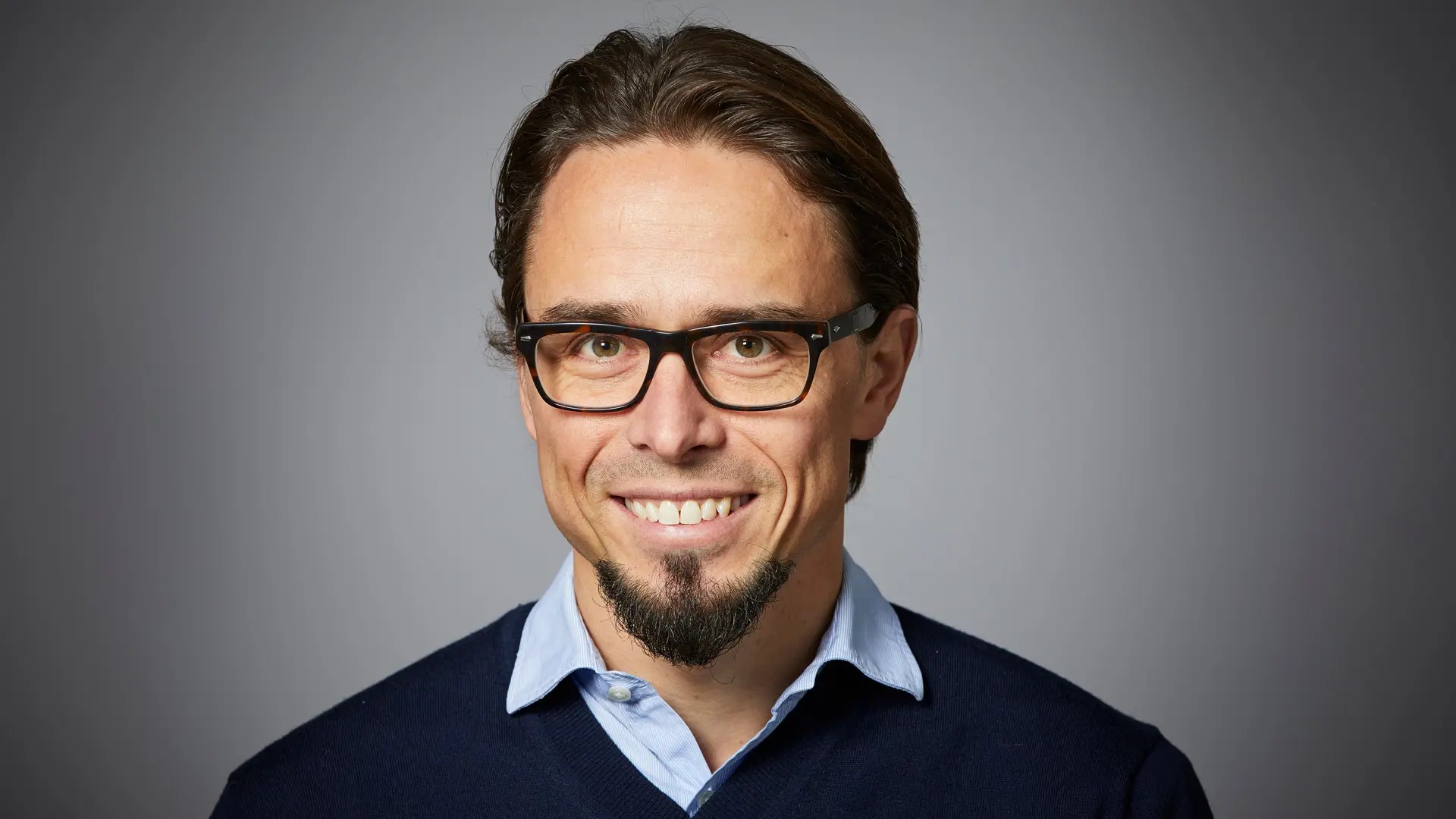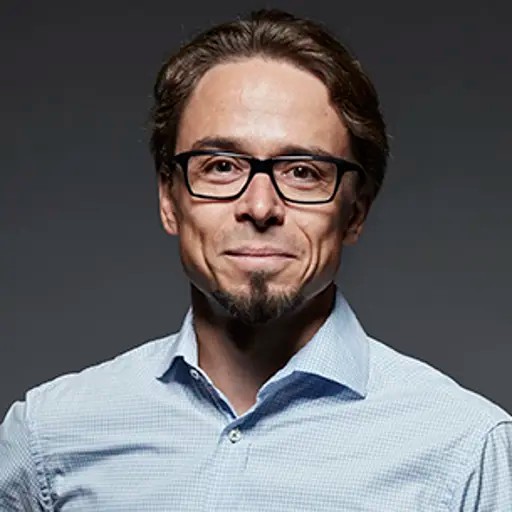
He rides his bike to his sailing boat in the marina and doesn’t own a car. But much of his work involves paving the way for hydrogen vehicles’ breakthrough. Physics professor Christoph Langhammer at Chalmers is developing hydrogen gas sensors that will hopefully help to get us there. In his work, he gets to know the smallest individuals that can make this possible.
“The smaller they are, the more interesting they become,” Langhammer says, as he offers us a cup of coffee on his family’s sailing boat. “I want to get to know each and every one of them and see how they interact with the world. I’m very interested in small individuals.”
What he’s talking about are nanoparticles. His research team is investigating how nanomaterials work and how they can be used for applications, such as sensors. Langhammer compares nanoparticles to a crowd of people, using the example of an audience at a concert. From a distance, everyone looks alike, but the closer you get, the more unique traits you can observe in each individual. To get nanoparticles to work in a specific way, the particles’ properties must be matched to the task. When that happens, they can achieve great things, such as contributing to safe, and environmentally friendly vehicles that emit nothing but water.
Sensors with high safety requirements
But hydrogen gas involves a lot of challenges, because the hydrogen molecule is particularly troublesome: It’s small, light and likes to leak. It’s also invisible, odourless and extremely flammable. Just a four per cent concentration of hydrogen in the air creates an explosive blend that can be ignited by the tiniest spark.
“To ensure that hydrogen vehicles are safe enough, we’ll need extremely efficient hydrogen gas detectors,” he explains. “They have to be able to detect minuscule amounts of hydrogen in the air in order to stop any leaks before an ignitable hydrogen concentration is reached. So far, there is no competitive technology that meets the high safety requirements of the vehicle industry, but we are well on our way to developing such technology. It would be fantastic if we were the first to meet those demands.”
What many would call a researcher’s dreams, he sees as goals or visions. To achieve them, he has chosen to work with both fundamental research and applications. This ensures that he asks the right questions and develops the methods necessary to advance his research. This approach is one of the reasons he has managed to build up a broad funding base.
Looked for a warm place – ended up in Sweden...
You might think he would have been just as strategic in choosing his profession, but that wasn’t the case. Christoph Langhammer had a broad range of interests. He likes architecture, archaeology and chemistry, but maths was not his strong suit. He focused on languages in upper-secondary school, played competitive handball and nearly became a fighter pilot. Then he studied materials science, because it was interdisciplinary and broad. He enjoyed it so much that when it was time to do his degree project, he decided to continue his studies abroad. Somewhere warm by the sea – preferably in the United States. But it didn’t work out that way – instead he went north to Sweden and Chalmers, attracted by great colleagues and first-class research.
His linguistic interest helped him out in his new country, and today he speaks eight languages. Although he moved to Sweden as an adult, he speaks the language like a native. That might not have been the case if “his” desk hadn’t been occupied when he got back to Chalmers to pursue his doctorate in 2004.
The place where he had worked on his degree project was now occupied by a female doctoral student from the province of Värmland. Her name was Elin Larsson. It turned out they had a lot in common. Today, her name is also Langhammer and they have two children. They also work together in a company that they started in collaboration with their supervisors after defending their doctoral theses.
Similarities between sailing and research
They also share a passion for sailing, and Christoph breathed a sigh of relief when they bought a boat together.
“I co-owned my first boat with a female doctoral student who couldn’t swim. Her boyfriend was the one who wanted to sail; she was terrified. Those were some really difficult voyages...”
Even though sailing and research are very different things, there are several similarities.
“There are technical challenges, the need to focus on what you’re doing and the interplay of many factors. I don’t race, but I am a competitive person and I like that you can always trim your sails a bit better…”
In research, there are also moments that are completely ultimate. When the present is more exciting than the vision.
A feeling that can't be beaten...
“It’s fantastic when my research team finally manages to piece together the puzzle of an exciting question and understand how something works and what we are measuring. Because we work closer and closer in the team, as well as with our colleagues at Chalmers and internationally, our research is moving forward, both theoretically and experimentally.”
In his role as a PhD supervisor, Langhammer also has the opportunity to let others blossom.
“A really high-quality doctoral thesis defense is a sheer pleasure. It’s so wonderful to look back on the journey that person has made from a beginner in the lab to an expert in their field, and to see how passionate they are about their topic. That feeling that the person is now ready to take the next step in their career on their own, with no need of a supervisor anymore, is extremely satisfying, combined with the knowledge that we have brought the research forward. That feeling can’t be beaten.”
Christoph Langhammer is happiest on board the family’s sailing boat, a Maxi 1100. Sometimes he sits and works here, but usually boating is about relaxation, nature and quality time with the family.
More about Christoph Langhammer
Born: 22 September 1978 in Zurich in Switzerland
Lives: A flat in the Eriksberg district of Gothenburg
Family: Wife and two children aged 5 and 3
Job: Associate professor at the Department of Physics at Chalmers
Career in brief: After finishing upper-secondary school and his military service as an officer in the Swiss Air Force, Langhammer began studying materials science at the Swiss Federal Institute of Technology (ETHZ) in Zurich. He earned his master’s degree in 2004 and did his degree project at Chalmers. He then continued his path at Chalmers, earning his PhD in 2009. After that, he co-founded the company Insplorion. In 2013 he was promoted to associate professor. Currently, Langhammer heads a group of 13 people whose research is funded by the Swedish Research Council, the Swedish Foundation for Strategic Research, the European Research Council ERC, and the Knut & Alice Wallenberg Foundation. He is also an “SSF Future Research Leader” and a “Wallenberg Academy Fellow”.
Leisure interests: “Previously, it was mostly handball. I played in the top division of the Swiss Handball League and in IK Celtic after moving to Gothenburg. I started sailing when I was working on my doctorate – it’s an interest I share with my wife, Elin. I like being out in nature, and sailing with my family is not only a great way to spend time together, it’s also a great way to relax. The kids and I also go swimming every week, and I enjoy cooking.”
Favourite place for inspiration: “Inspiration can strike just about anywhere. It might be something I see, hear or read, or it strikes when I’m busy doing something completely different, like playing with the kids, cooking or sailing.”
Most proud of: “Being an involved father while maintaining a research career. When the kids hurt themselves, they’re just as likely to come running to me as to their mother. That’s a great feeling. To balance work and family, I choose to say no to a lot; I rarely travel for work and I make sure to be extremely well organised.”
Motivation: “I’m motivated by the desire to constantly improve and to better understand how something works. I want the things I do to turn out very well, or else I don’t want to do them at all. I also want to get answers to my questions and I like challenging myself. How far can I pursue something, how can I prove that it’s possible? I’m definitely a competitive person, and I like to compete with myself.”
First memory of physics: “The first time I remember really thinking about physics and its implications was when I made a solar cell. It only generated a little bit of current, but it worked and it was cool.”
Best thing about being a scientist: “That moment when all the questions are answered. That feeling when, at least for the moment, you have no more questions to ask and everything seems to make perfect sense. The idea that no one else has achieved this level of understanding in this particular question is really cool. It makes me feel that I’m contributing to the development of our society, which is the goal of research.”
Challenges of the job: “Constantly having to make sure that my research has enough funding is one of them. You have to maintain what you’ve built up and make sure not to lose the knowledge and skills in the team. It’s also a great challenge having to be good at so many things in my job. Apart from the research itself, you have to be good at writing applications and publications, guiding employees, teaching, supervising and taking an interest in the development of the department and the research community as a whole. At the same time, I grow and evolve as a person when I take on these tasks.”
Dream for the future: “I don’t have any need of dreaming at the moment. To be honest, I have difficulty believing that it’s possible to have much of a better life than I have today – both professionally and personally. But I do have objectives – visions that are based on reality. One example is developing a hydrogen gas detector that meets all the requirements of the vehicle industry to ensure that the vehicles are safe – that would be fantastic. The only emission from a car that runs on hydrogen gas is water.”
Contact
- Full Professor, Chemical Physics, Physics
